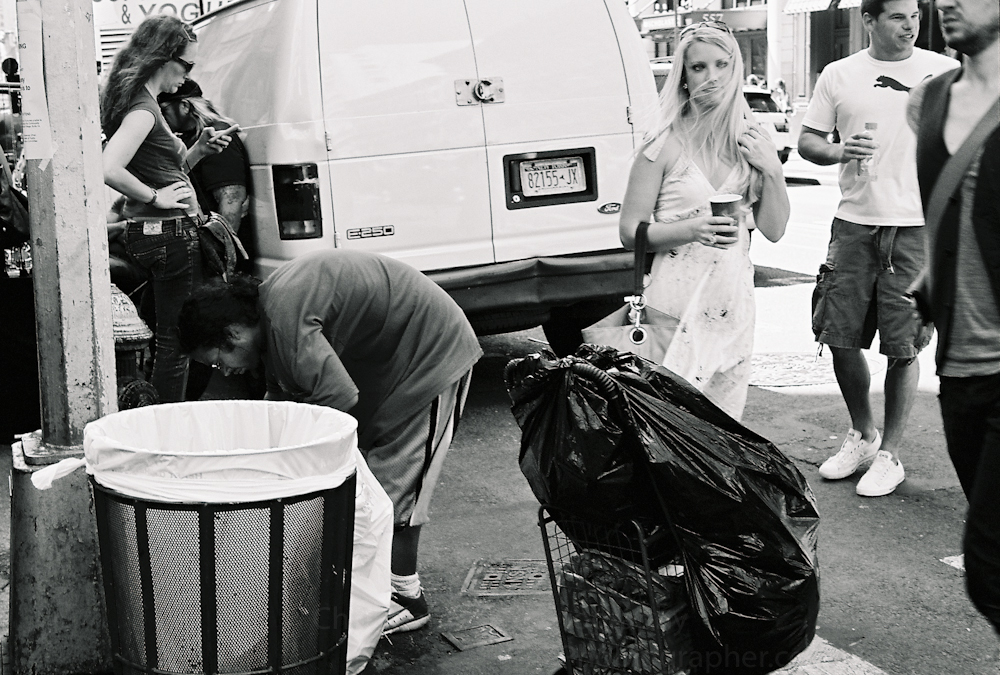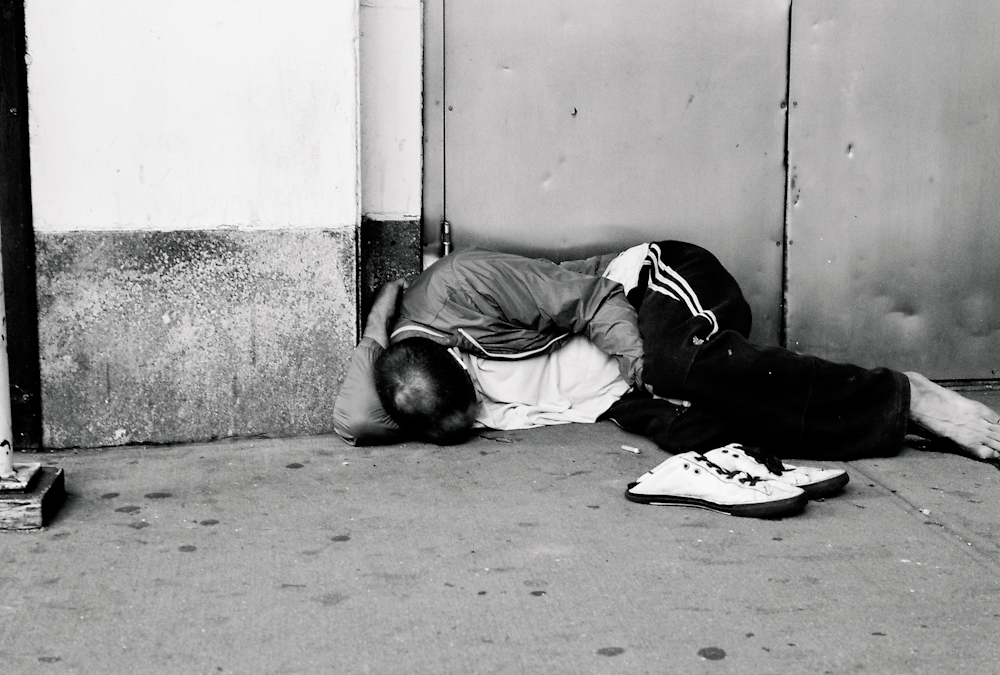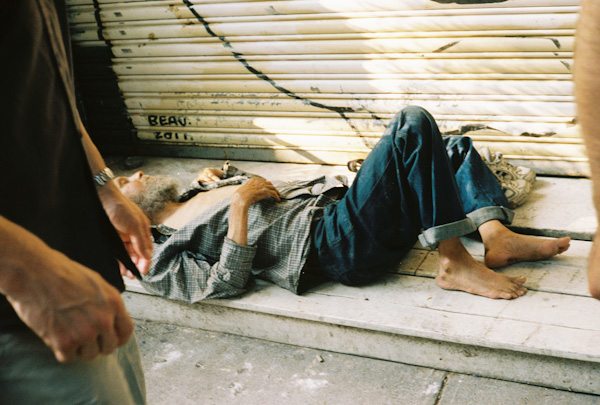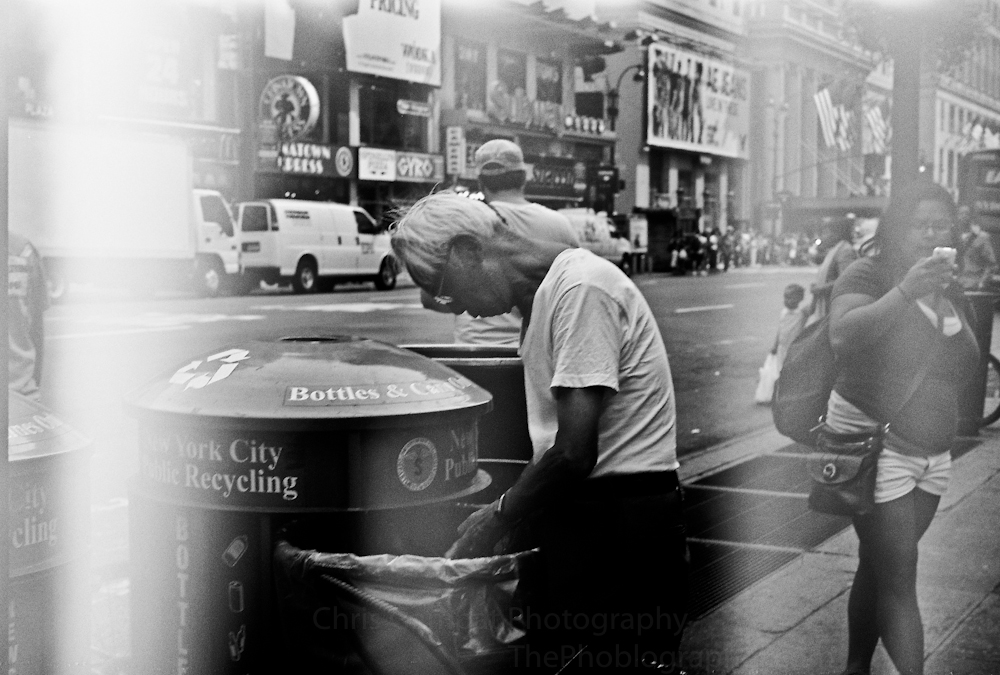Last Updated on 10/01/2020 by Chris Gampat
Street photographers who photograph homeless people aren’t doing those people any good in today’s world.
I’ve spoken before about photographing and doing street photography with intent. And I think that when street photographers take photos of homeless people that they’re not doing these people any good. Photographing scenes where these homeless people are the primary focus and surrounded by others more financially fortunate is also not such a great thing to do. While many years ago, this could have told stories when put into the pages of credible publications, today’s world doesn’t lend itself well to this type of photographic intent. Indeed, the world has changed and actions speak louder than words. What often ends up happening is that these photographers self publish by adding images to Instagram or other platforms. These images are then passed by in a feed, double tapped, and moved onto another photo or served an ad. The result is that a person viewing the photos doesn’t want to go help a homeless person in the way that politicians and people used to do.
Many of these street photographers photographing homeless folks state that they’re trying to tell “their stories.” Said stories are often those of hardships. In many ways, this is exploitation. Just to touch the tip of the iceberg, the homeless aren’t in a position to be able to know any better necessarily. Paying them also goes against a number of journalistic ethics. This is also why photojournalism and street photography aren’t the same. When you’re working on telling a specific story, the work becomes documentary or photojournalism in nature. Street photography is otherwise more of an art of random moments that are eye catching. The labels are so important due to, again, intent. Much of content delivered online is voyeurism. Let’s show you an example. There is a big rally going on for women’s rights and you go to photograph it:
- Why are you photographing it?
- You get fun out of photographing it, but why not try to help the cause since it’s probably something you support?
- Do you have an outlet you could license the images to?
- How is what you’re doing any different than what everyone else is doing?
- What’s your intent here? Are you going to a rally to talk to people rather than, you know, supporting the cause?
- Are journalistic ethics keeping you away from supporting their cause?
- What will your images being posted online do for the cause?
- Who are the people in your images?
- Are there habits repeated in the subjects photographed?
- Will anyone care about the images you make one week from now? What about two weeks from now?
- How will you keep those images in front of other people as time goes on?
- How are you most importantly going to fight peoples’ attention when so many cute puppies and kitties are on the web?
The last question is truthfully a serious one.
So let’s bring this back about to homeless people and let’s think about a number of questions photographers should ask themselves when photographing homeless people.
- Were you assigned to do this for a job?
- What’s your intent with this image that you’re about to make?
- What are you going to do to keep the cause in front of someone?
- What are you doing to ensure that these people end up in a better place?
- Do you donate to homeless shelters?
- Do you volunteer your time?
- When you’re done with a meal at a restaurant and have leftovers, do you find homeless people and give the food to them?
- Do you plan on adding this image to a part of your portfolio that people should know you by?
- Why is your image important?

If you can’t answer any of these questions with good intentions, I firmly believe that it is time to put the camera down. One of the biggest problems with so many new people taking up cameras recently is a lack of understanding of ethics and intentions. While I think that it is wonderful that there are so many photographers out there, many of them don’t understand their identities and also don’t know how to go about approaching different situations. Many also don’t think anything about the people that they’re photographing. Want proof of this? Go to a convention like Comic Con and you’ll see just how creepy it is. It’s sickening.
Editor’s Note: These images in this story were made by me when I was first really starting out. Back then, I didn’t know any better. And so this piece is being written from a standpoint of learning through mistakes with INTENT of you becoming better.




